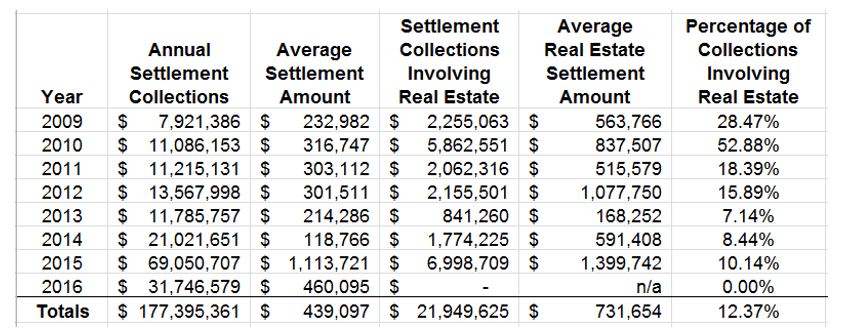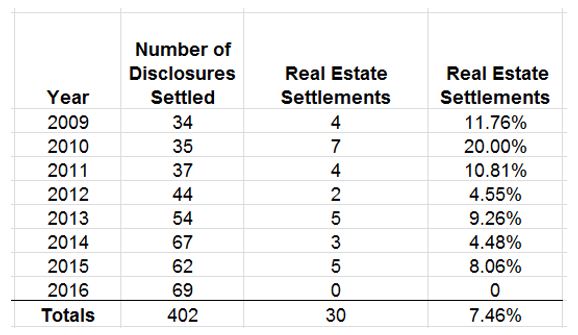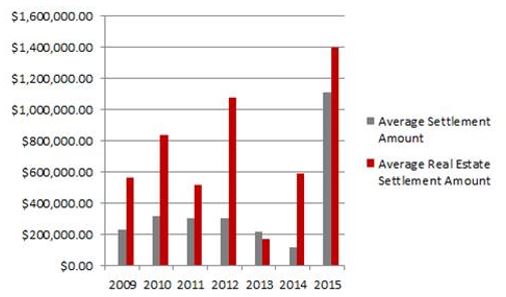Health care providers subject to the Stark Law and the Anti-Kickback Statute can face significant penalties for non-compliant arrangements. In the event that a provider discovers a potentially non-compliant arrangement, it may elect to disclose the arrangement to government officials in an effort to limit its liability. Potential Stark Law violations are often disclosed to the Centers for Medicare & Medicaid Services (“CMS”) using the Voluntary Self-Referral Disclosure Protocol (“SRDP”). Potential violations of the Anti-Kickback Statute or a combination of the Anti-Kickback Statute and the Stark Law are often disclosed to the Office of Inspector General (“OIG”) using the Provider Self-Disclosure Protocol (“SDP”).
In October, Hall Render analyzed SRDP settlement data published by CMS and SDP settlement data published by OIG. The purpose of our analysis was to identify settlement trends, including the number of published settlements per year and the average published settlement amount. We also analyzed the number of published non-compliant real estate arrangements that resulted in disclosures and whether those arrangements resulted in higher or lower settlement amounts when compared to settlements that did not involve a real estate arrangement.
In this article, we will summarize our findings with respect to the OIG SDP settlement data. In subsequent articles, we will look at the facts of several OIG SDP settlements that involve real estate arrangements. We will also compare the OIG SDP settlement data to the CMS SRDP settlement data in a separate article.
SDP Settlement Data Published by OIG
OIG currently publishes settlement data from January 2009 through August 17, 2016. Our analysis of the data revealed that the number of settlements has increased annually with the exception of 2015, when the number of disclosures decreased slightly from 2014. The average settlement amount has not always followed the same increasing trend and increases in some years but not in others.
Non-compliant real estate arrangements stood out as being more costly when compared to the average settlement amount. The cost of settling a violation involving a real estate arrangement was 66 percent higher than the average settlement that did not involve a real estate arrangement. The average settlement involving a real estate arrangement was $731,654.17 compared to the average settlement amount of $439,097.43 for matters not involving a real estate arrangement.
Approximately 7.46 percent of all settlements during the period in question involved a real estate arrangement, but those arrangements accounted for 12.37 percent of the dollars paid to OIG. A cumulative breakdown of the data has been summarized in the table set forth below.

A breakdown of the real estate data has been summarized in the following table.

The following chart is designed to show the average settlement amount per year for all potential violations and the average settlement amount when the settlement involved a real estate arrangement.

It should be noted that some of the settlements published by OIG included multiple compliance violations. In instances where a real estate arrangement was one of multiple violations reported in the settlement, the entire settlement amount was taken into account. Due to the limited data published by OIG, we were unable to segregate the amount paid for the real estate violation.
Practical Takeaway
This data suggests that health care providers should implement robust real estate compliance programs. The cost of settling a non-compliant real estate arrangement can be costly.
If you have questions about this article or structuring compliant real estate arrangements, please contact:
- Schuyler File at (317) 429-3641 or sfile@wp.hallrender.com;
- Andrew Dick at (317) 977-1491 or adick@wp.hallrender.com; or
- Your regular Hall Render attorney.

